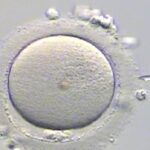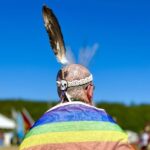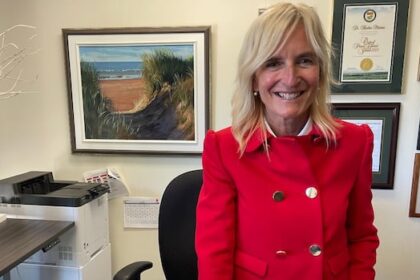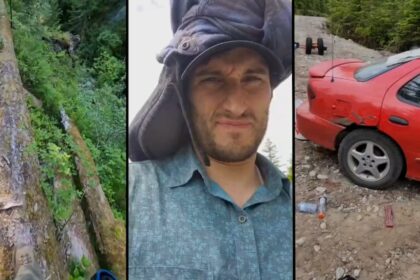NorthThe Kwanlin Dün First Nation (KDFN) has been growing potatoes, Swiss chard, kale, lettuces, and other vegetables at its farm north of Whitehorse, and delivering the produce to elders and other community members.’It’s uplifting, it’s nice to nurture something and then be able to help feed your community with it’Isabella Calissi · CBC News · Posted: Sep 21, 2025 4:00 AM EDT | Last Updated: 3 hours agoHarvesting potatoes at the Kwanlin Dün First Nation’s farm north of Whitehorse. (Isabella Calissi/CBC)The Kwanlin Dün First Nation (KDFN) in Whitehorse is wrapping up the first harvest season at its new farm.The First Nation has been growing potatoes, Swiss chard, kale, lettuces, cabbages, broccoli, turnips, beets, and carrots, and delivering them to elders and other community members.In Southern Tutchone the farm is known as Kwänlin Dün Kwäts’änäkhe k’ènji or “Kwänlin Dün they grow food place,” but it’s better known as the KDFN agricultural project. Kwanlin Dün Chief Sean Smith says the project started in June, when the First Nation had an opportunity to sign a three-year lease on the previous site of Sundog farm, just north of Whitehorse. The farm, which has been in operation since June, is located by Upper Laberge and Policeman’s Point. (Isabella Calissi/CBC)Along with field space, the First Nation also has use of two greenhouses, an irrigation system, and a number of key pieces of equipment.Smith says building food sovereignty in the North has been a goal of the First Nation for a while. “When it comes to our communities in the North … we’re largely reliant on trucks coming up here to bring probably 85 to 95 per cent of our goods,” said Smith. He said that transportation corridor can and has been affected by weather and climatic events, limiting food deliveries. Along with potatoes, the site has been growing Swiss chard, kale, lettuces, cabbages, broccoli, turnips, beets, and carrots. (Isabella Calissi/CBC)”Having access to food, especially healthy food, is really critical in terms of us looking ahead and making sure that we’re building out our communities,” he said. Another reason for starting the farm, according to Smith, was to empower KDFN citizens and give them a chance to learn how to manage and work on the land. Jeremiah Gordon, left, and Donovin Gordon at work on the farm. (Isabella Calissi/CBC)Aaron Holway, a farm manager at the site, says this is his first time working on a farm, and he finds the work rewarding. “I’m a third-generation gold miner, and I wanted to do something that was more building of the soil instead of breaking it down,” said Holway. “And I feel like being able to produce food for your community is vital for everyone.”But also it’s uplifting, it’s nice to nurture something and then be able to help feed your community with it.” ‘Having access to food, especially healthy food, is really critical,’ said farm manager Aaron Holway. (Isabella Calissi/CBC)Along with creating new fence lines and harvesting crops, Holway has been part of the team delivering food to the community. He helps drop off food to elders, KDFN community centres, and even the Yukon food bank. “On a drop-off day, we got to go door-to-door and put big smiles on all the elders’ faces and deliver food to them. And I always get big ‘Gùnáłchîsh, Shä̀w níthän, Mähsi’cho’s. Everyone’s just super thankful and it’s extremely rewarding,” said Holway. David Moroz has been working at the farm this year and describes being “up to his ears” in potatoes. He says he used to work on a potato farm when he was younger and that it feels good to be back. He also says it was “about time” for this project to happen.David Moroz says he’s been ‘up to his ears’ in potatoes. (Isabella Calissi/CBC)Smith says as the farm expands, the First Nation may look into proper winter food storage and commercialization. “That’s something further along as we go down this path [to] get to that point where we can commercially sell this product within our community,” Smith said.”I think that’s an opportunity in itself, and I think there’s a lot of good things that can come from this project.” Along with field space, the First Nation also has use of two greenhouses, an irrigation system, and a number of key pieces of equipment. (Isabella Calissi/CBC)ABOUT THE AUTHORIsabella Calissi is a reporter with CBC North in Whitehorse. Reach her at: isabella.calissi@cbc.ca.
Sunday, 21 Dec 2025
Canada – The Illusion
Search
Have an existing account?
Sign In
© 2022 Foxiz News Network. Ruby Design Company. All Rights Reserved.
You May also Like
- More News:
- history
- Standing Bear Network
- John Gonzalez
- ᐊᔭᐦᑊ ayahp — It happened
- Creation
- Beneath the Water
- Olympic gold medal
- Jim Thorpe
- type O blood
- the bringer of life
- Raven
- Wás’agi
- NoiseCat
- 'Sugarcane'
- The rivers still sing
- ᑲᓂᐸᐏᐟ ᒪᐢᑿ
- ᐅᑳᐤ okâw — We remember
- ᐊᓂᓈᐯᐃᐧᐣ aninâpêwin — Truth
- This is what it means to be human.
- Nokoma











